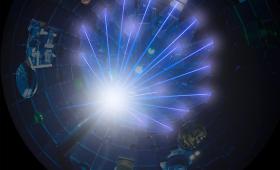LLNL scientists have developed a new technique to analyze fentanyl in human blood and urine samples that could aid work in the fields of medicine and chemical forensics.
Science and Technology Highlights

Livermore scientists have developed a data-driven approach to predicting polymer properties using a novel machine-learning model.

Livermore scientists have developed a new technique to investigate microbial activity of microorganisms under realistic conditions, without the need for lab culturing.

Scientists have detected a previously hypothesized class of nitrogen fixation in the surface ocean.

Researchers at Livermore have discovered that ions behave differently in fusion reactions than previously expected.

Livermore scientists studied "dwell fatigue," a peculiar failure mode can initiate microscopic cracks that drastically reduce a component's lifetime, such as titanium aircraft parts.

Research suggests that immune responses could be bolstered by drugs to help people recover from brain infections caused by an emerging pathogen, according to studies of the emerging pathogen Rift Valley fever virus.

A record high-laser-energy NIF target shot on Sept. 19 produced about 1.2 million joules of fusion energy yield.

New research suggests that grassland viral communities are highly spatially stratified across just a single field.

A new National Ignition Facility Discovery Science campaign is designed to simulate the type of photoionized plasma found in accretion disks and the surrounding stellar wind.

